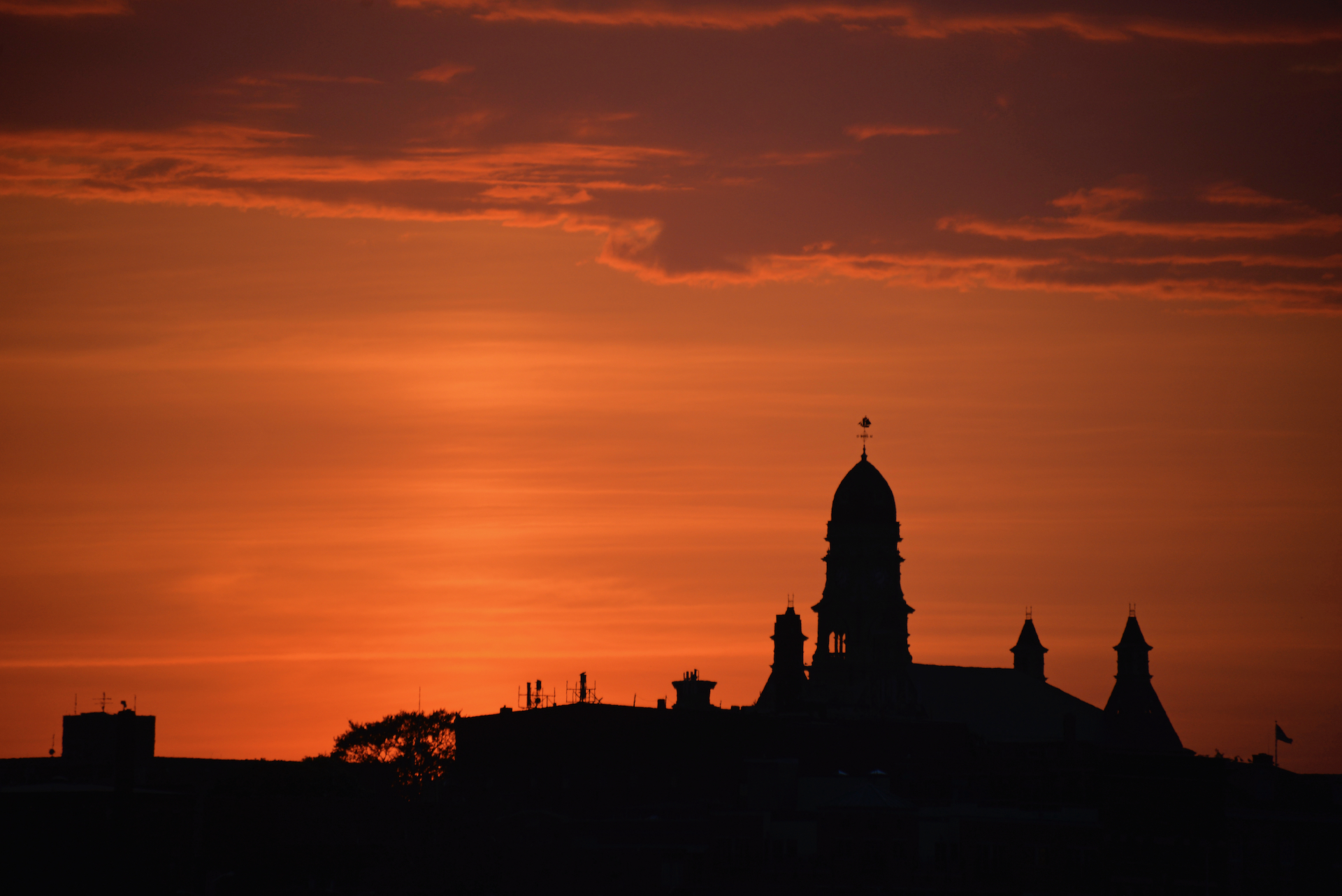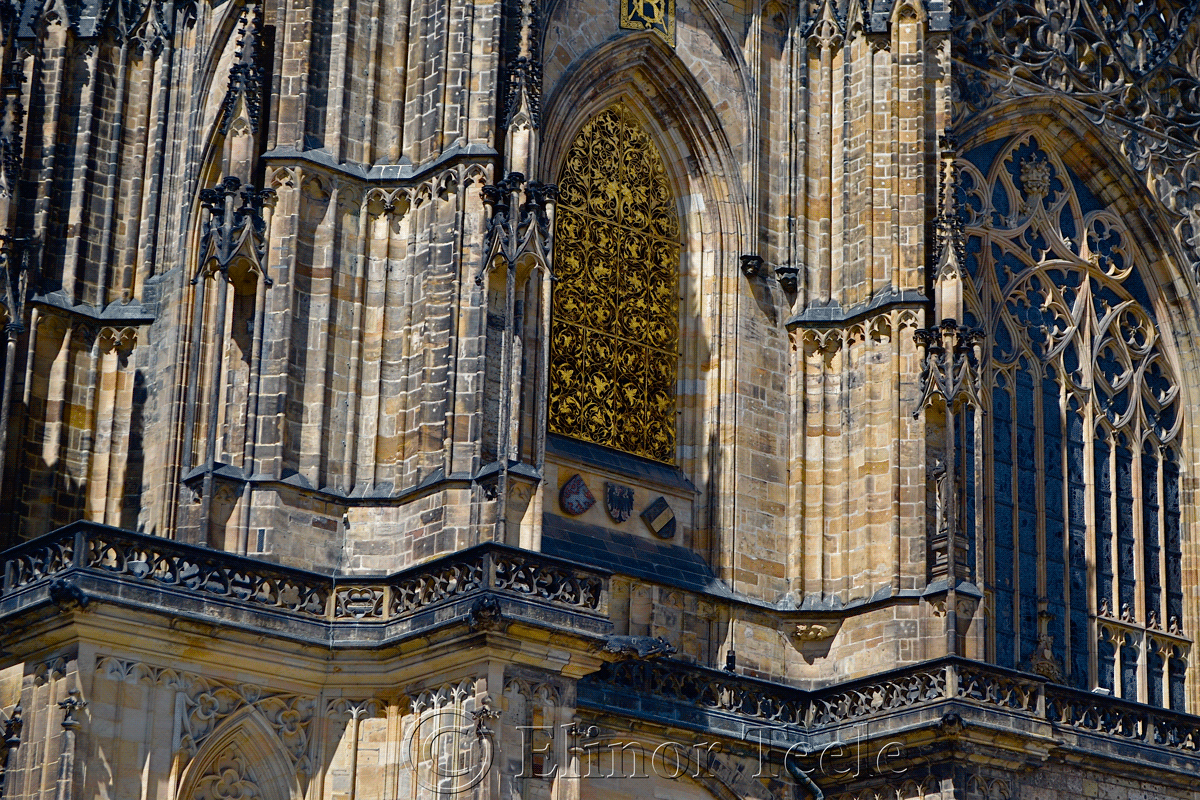St. Vitus Cathedral is the Gothic pride of Prague, but, in reality, the cathedral wasn’t finished until the 1950s. With the financial support of Charles IV, King of Bohemia (later Holy Roman Emperor), the chapter of the cathedral and the Archbishop Arnost of Pardubice, work began in 1344.
The Frenchified feel comes from Matthias of Arras, the cathedral’s first architect. He died eight years into the project, leaving only the easternmost parts of the choir complete. His successor, Peter Parler, was younger and hardier. From the age of 23 to his death 47 years later, he put his heart and soul into the choir and transept.
You can see his handiwork in the bell-shaped columns, clerestory walls, the Chapel of St. Wenceslas, the original window tracery and, especially, the dynamic zigzag pattern on the choir ceiling (called Parler’s vaults or net-vaults).
And you can see him. Trained as a sculptor and woodcarver, Parler decided to throw in a fair amount of architectural sculpture. Cast your keen eyes at the triforium to discover busts of the royal family, saints, Prague bishops and the master builder himself.
Construction may have gone quicker if Charles IV hadn’t kept pulling Parler away for other projects, including the Charles Bridge. Work continued under Parler’s sons, but the Hussite War and the great fire of 1541 caused progress to come to a crashing halt.
It wasn’t until the 19th century, during the Czech National Revival, that the final push began. Areas were repaired, the interior was restored and the western door and crossing completed. Look for the touch of Prague’s early 20th century artists in the fabulous stained glass windows and outer bronze doors.

